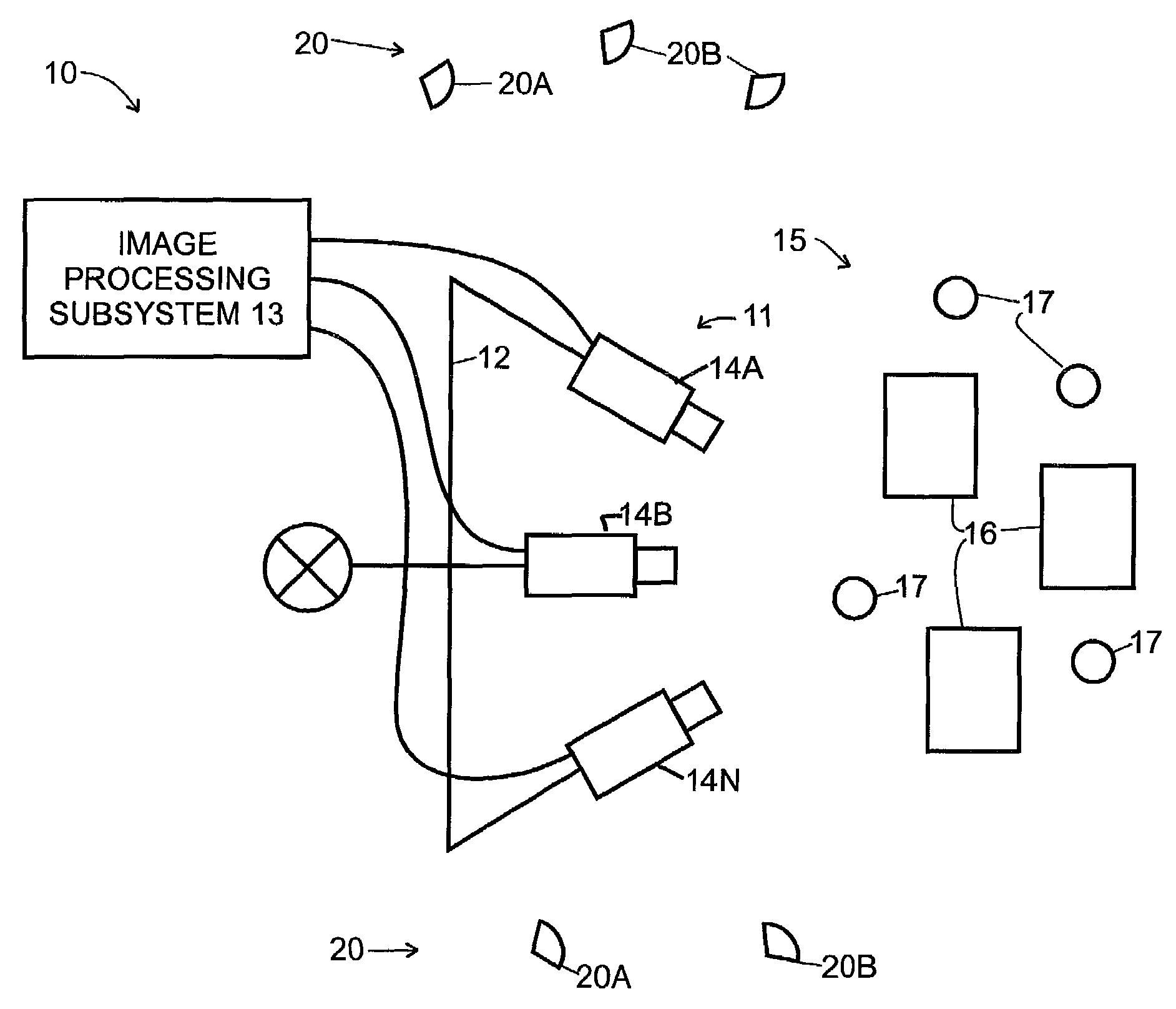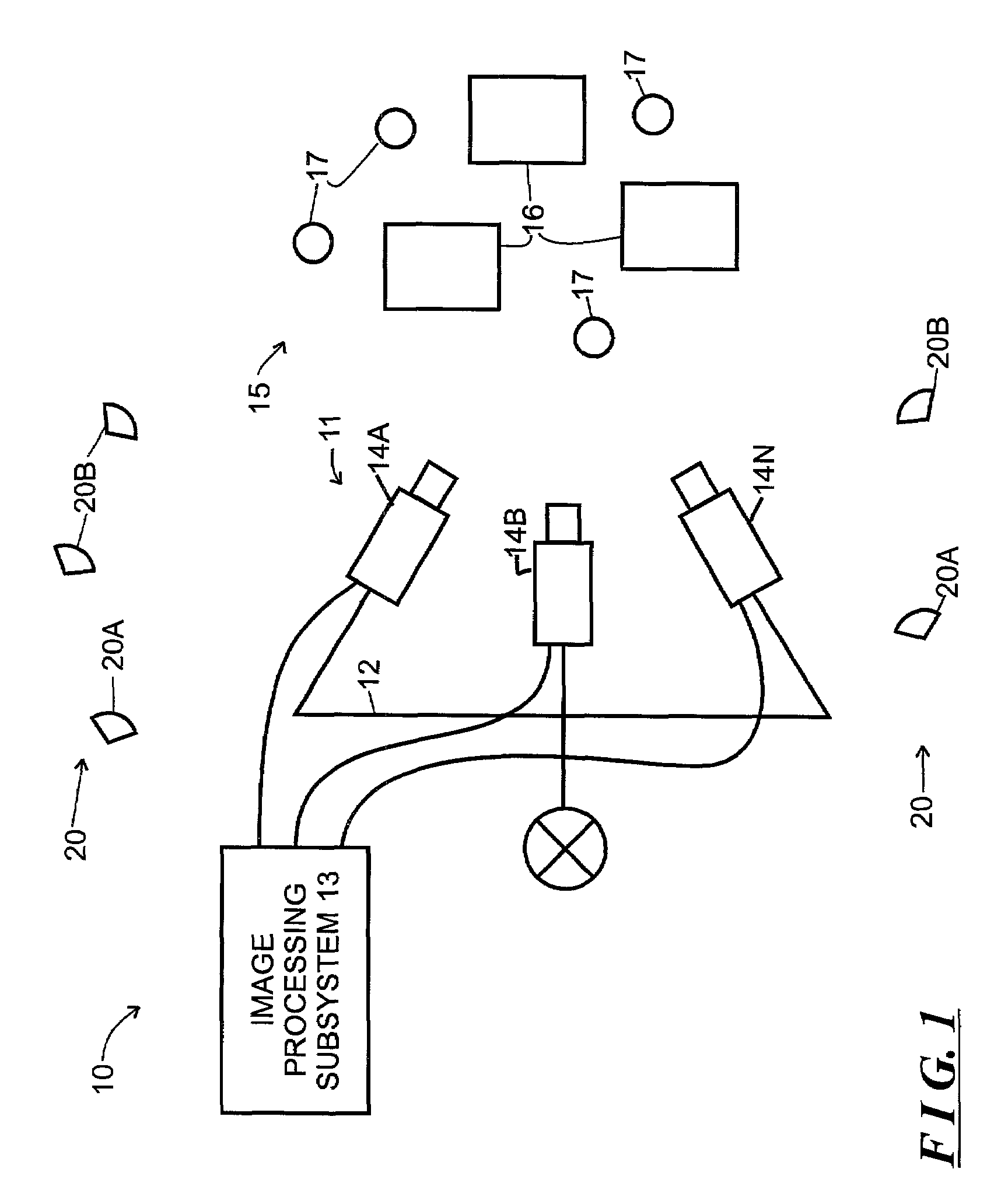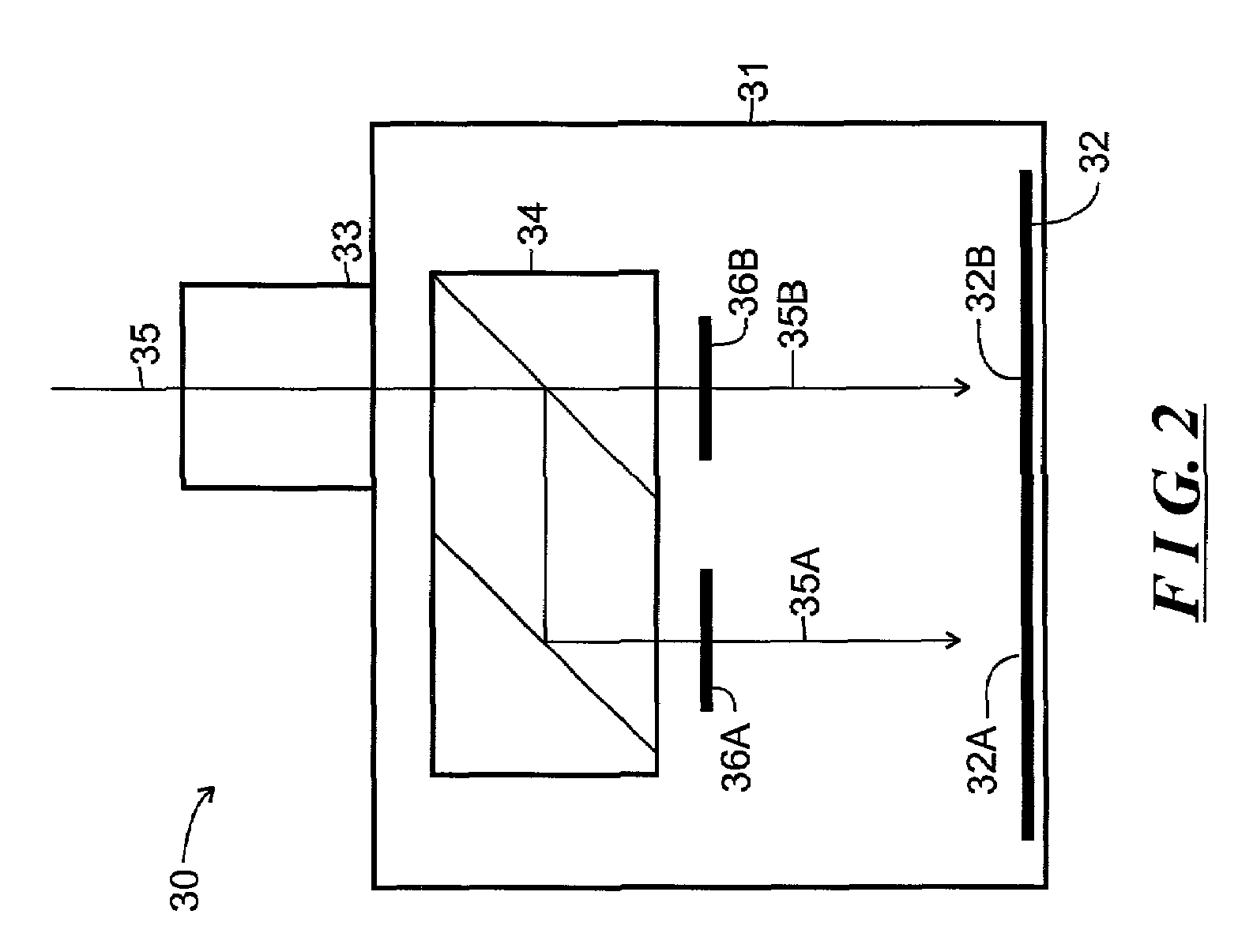Method and apparatus for accurate alignment of images in digital imaging systems by matching points in the images corresponding to scene elements
- Summary
- Abstract
- Description
- Claims
- Application Information
AI Technical Summary
Benefits of technology
Problems solved by technology
Method used
Image
Examples
Embodiment Construction
[0014]FIG. 1 schematically depicts a digital imaging system 10 constructed in accordance with the invention. The digital imaging system 10 includes an optical head 11, a rig 12, and image processing subsystem 13. The optical head 11 comprises one or more cameras 14A, . . . , 14N (generally identified by reference numeral 14n) each of which can record images of a scene 15. The rig 12 is provided with a motion capability, for example, that can translate and / or rotate the optical head 11 relative to the scene 15 to allow the cameras 14n comprising the optical head 11 to record sets of images of the scene 15 from a plurality of positions and angular orientations. In one embodiment, the cameras 14n comprising the optical head 11 include image sensing and recording media such as CCD (charge coupled devices) or CMOS (complementary metal-oxide semiconductor) devices, which record images in electronic form, and the cameras 14n download the images to the image processing subsystem 13 after th...
PUM
 Login to View More
Login to View More Abstract
Description
Claims
Application Information
 Login to View More
Login to View More - R&D
- Intellectual Property
- Life Sciences
- Materials
- Tech Scout
- Unparalleled Data Quality
- Higher Quality Content
- 60% Fewer Hallucinations
Browse by: Latest US Patents, China's latest patents, Technical Efficacy Thesaurus, Application Domain, Technology Topic, Popular Technical Reports.
© 2025 PatSnap. All rights reserved.Legal|Privacy policy|Modern Slavery Act Transparency Statement|Sitemap|About US| Contact US: help@patsnap.com



